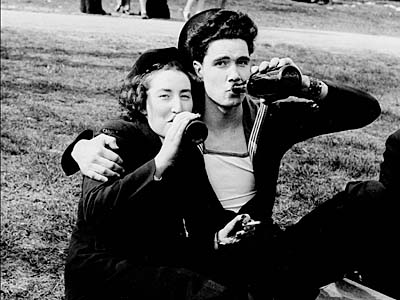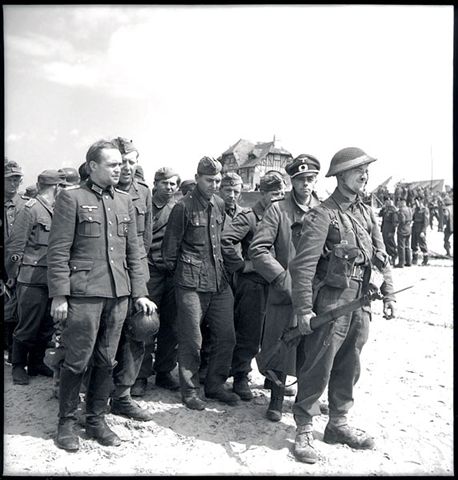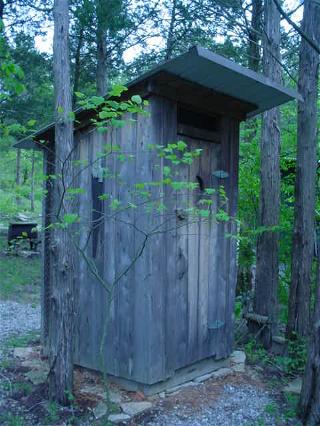MONTHLY ACTIVITIES
In and around Alder Point and Area certain rituals were carried out throughout the year and these didn’t seem to waiver from one year to the other even though I am sure they did. As I recall here briefly are the functions and activities that we learned to expect to participate in each month:
January – Of course bringing in the New Year was celebrated late into the night. At mid-night it was customary to stand outside with pots and pans and make as much noise as you could. It was not uncommon to hear the odd shotgun or rifle being fired as well. Midnight mass was celebrated with great ringing of the church bell. New Year’s day dinner usually consisted of chicken, or goose or a roast of pork and lots of desserts. School of course was in full swing by this time and the walk to and from during these most severe of weather conditions was sometimes terrible. We all came home for lunch hour which consisted of using almost all of the time to walk to and from with but a few minutes to scoff down a bowl of soup and be away. The weather during the month of January was harsh to say the least. You had to dress warm with hats and mitts, socks and bloomers. Everyone had homework and we studied by the light of a kerosene lamp. There was the daily chore usually in the morning to clean the lamp shades – if I close my eyes I can hear my mother’s wedding ring making a noise on the lamp shade as she cleaned shades normally with newspaper.
February – This month continued to be severe but there was normally lots of skating, coasting and hockey. It was also Valentines. We made up cards at school and sent them to those who we had a crush on. Teachers attempted to make it more equitable by having us create them and then draw them out of a hat so that no one would be offended. We made fudge at school on Valentines day. We had as many pancakes as we could eat on Shrove Tuesday. They had a taste all their own with butter and molasses or molasses alone. Crown Brand and Bee Hive corn syrup could have been used if available and was wonderful on pancakes. Real Canadian Maple Syrup was just not available.
March – I always remember March because it seemed that the cow freshened – gave birth to a beautiful heifer. This was an important event and required everyone to call at the barn for a look and a chance to pet the new baby. It was also a month for very severe freak snow storms. Oftentimes men had to use their snow shoes to get from place to place. Men also assembled in groups to shovel a path on the roads in order to permit passage of a horse and sleigh or a motor car. The drift ice was usually on our shore and in the 1930’s and 1940’s men and boys went out on the ice and killed seals. Some people ate the seal meat. The skins were cleaned and used for clothing or sold. By the end of March into early April the roads started to thaw and become near impassable for vehicles of any kind. When we were older our lobster fishing parents sent us into the woods to cut bows and rings for the lobster traps. We learned at a very early age how to knit heads for the lobster traps. This was a task Grampa Fraser did all his life and up into his nineties – knit heads for Daddy and for others. Many of us lads and girls would also accompany our parents in the dory and go along the low tide shore by the reef looking for flat rocks for lobster trap ballast.
April – Lent normally fell in April and resulted in everyone fasting. This fasting had numerous rules attached to it. Lent consisted of attending church, carrying out the stations-of-the-cross, and with Holy Thursday and Good Friday having marathon mass of at least three hours. This was followed by Holy Saturday and then of course Easter Sunday. I remember my father with a number of his buddies sitting in our kitchen waiting for noon on Holy Saturday. Once noon came they opened their quarts of beer and there ended the fast. I can’t imagine men doing that today and waiting until noon to open their “Export” or “Coors.” Easter Sunday was traditional for ham and eggs and normally associated with who could eat the most eggs. Some families boiled eggs and painted them before Easter. Small gifts were sometimes given as well. Some cod fishing usually began in April. It was normally the time of year for finishing off making lobster traps and painting buoys. Boats also received a fresh coat of paint and their bottoms copper painted. I need only close my eyes to smell again the fresh smell of this paint and sit and enjoy the warmth of the spring sun which by now was getting higher into the sky and warmer – ah spring in Alder Point at the shore on the sunny side of the fish house was heaven.
May – This month ushered in the beginning of lobster fishing May 15th. Boats where launched on the high tides and rigging readied and traps moved to the end of the wharves. Boys were required to assist their dads on setting day and as a result got to miss school for the day. Mothers received May flowers on Mother’s Day picked from the nearby woods and a small gift usually made by children for their mothers. May 24th the Queen’s Birthday was picnic day. We all piled into the backs of trucks and went off to places like Boisdale, Iona or Johnstown for a picnic and games and of course the obligatory swim. You were a wimp if you didn’t swim on the 24th of May even though the water was as cold as it would be in January.
“The 24th of May, is the Queen’s Birthday, if we don’t get a holiday, we’ll all run away.”
June – June meant the end of the school year. We were freed up to commence all of our summer activities. Because the lobster factories were operating, some of us got jobs picking lobsters. We were of course more interested in fishing, swimming and playing sports especially soft ball. June meant exams at school and then awaiting the results to see if you graded.
The Boys of Summer
July – July 1st was our first summer holiday and resulted in celebrations and fire works. We attended picnics at the beach or at the back shore or even down at our own shores. Games such as hop scotch, ball, tag, skipping (girls always sang rhymes or songs while skipping – I never hear them do that today), Johnny Steps, red rover, and more were played late into the evening dusk. One game we played was on an empty 45 gal drum. You got up on it and tried to “walk” it across the field – it was difficult. Many of us learned to swim and dive during this time of the year. Visitors from “away” often started to arrive with strange talking cousins amongst them. July 15th meant the end of lobster season and the preparation of boats for sword fishing. Placing the spar and the chair and repairing the rigging and purchasing rope and kegs and darts and the long billed caps to shade the eyes. July and August also meant for us “Micks” several weeks of religious study delivered by the Nuns. They were a no nonsense bunch of educators and put a bit of a stint in our vacation time but on the other hand I suppose it didn’t do us any harm. Many of our friends the “Prods” thought it was a joke and often made fun of us. Some of them would in a group sing making fun of the Mass by uttering the words, “my mother can play bingo better than yours can,” and then they in unison would respond, “like hell she can.” This was carried on mimicking the liturgy between the choir and the priest – it could be quite funny really.
August – All of the summer sport and recreational activities continued during August. Many visitors from the “Boston States” and from “Down North” or “Waterford” were bound to show up on Sundays especially. More cousins to play with and to exchange games. Berry picking now became a ritual as well as a necessity. Strawberries, raspberries and later blue berries and black berries were picked as they became available and then cranberries. We picked our quota and ate an equal amount. This was a good time for as Grampa called it, “girl-in.” As we got older we tended to go off and pick on our own away from the family usually in places where the opposite sex picked. We also hung around the wharf swimming, diving, catching flat fish and perch and waiting for a sword fisherman to come in with a sword fish and see if we could get the sword. Some artistic types used to dry out the sword fish bills and paint creative designs on them as well attaching an attractive hand grip.
September – Usually school commenced after Labour Day. The first few days of September were involved if there were a few extra dollars around in going to town and getting some new clothes and scribblers and pencils for the beginning of school. On the very rare occasion you might get a new satchel although most of us boys used a belt around our books. Usually there was at least one new school teacher and sometimes both would be new at our two room school. Both of them usually boarded some place in Alder Point. We would all be anxious to meet the new teacher(s). This was a very exciting time getting back to school and visiting with some of our friends who we may not have seen all summer.
October – We celebrated Thanksgiving although it was not as elaborate as it is today. But we attended church had a special dinner with desserts and preserves which would be plentiful after coming out of the growing months. Halloween was celebrated at school as well as later that night locally. We bobbed for apples and dressed up and went door to door and played some tricks on people. The older boys often tipped over out houses. In the weeks leading up to Halloween we went into the swamp and cut cat tails and soaked them in kerosene and set them alight and used them as torches. As I recall they didn’t last long because the stem burnt before the cat tail and it fell off. We had some fire crackers. One trick we played was if people didn’t give you a treat you marked their windows (houses and cars) with soap.
Picking Cranberries
November – We were not near any Legion but local veterans dressed up and celebrated Armistice or Remembrance day November 11th with visits, strong drink and stories. From the stories and from what we have learned since they deserved the strong drink for what these brave men and women had to endure in the hell hole that was Flanders, Belgium and France in the First World War. We wore poppies and kept silent in school at eleven o’clock for two minutes after the teacher had explained the significance of the day. On nice days you could pick cranberries. Deer hunting season was an exciting time to watch for a big buck or doe to be hanging in someone’s apple tree. It was also time to start “banking” the houses and chopping more wood and piling it up where it could be kept reasonably dry and easy to get at in the winter.
December – Everyone was making candy, molasses taffy, cakes and pies and desserts of every description for Christmas. Christmas cakes were made and stored away. Early in the month orders were sent off to Eatons: candy and clothing and toys. I can still see the steaming Christmas Plum Pudding made in a flour bag normally with the Robin Hood imprint plain as day. We started in school to prepare for the Christmas Concert. Then there was Christmas Eve Mass and when we got older we all attended and tried to stay awake. Christmas day even when older was exciting with the opening of gifts and the visits of friends and the elaborate dinner of everything under the sun available. There always seemed to be an unexpected visitor for Christmas dinner usually some older bachelor who lived alone. If he dropped in for a drink he was usually invited to stay for dinner. We normally ate around noon and then went off playing hockey, skating or coasting (sledding).
The Christmas Concert



































Recent Comments